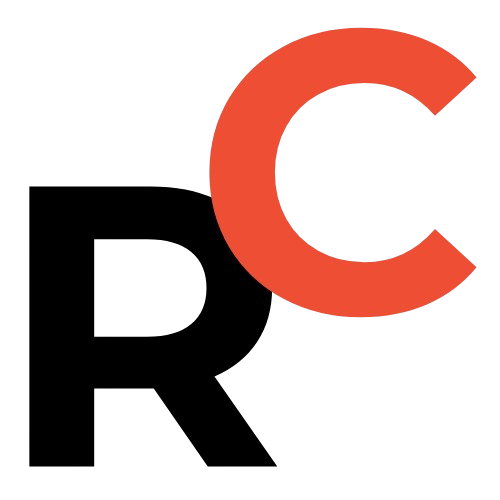Key Points
- Policy push: Regulators including CSRC (证监会) and 中央金融办 are rolling out measures and pilots to open channels for pension, insurance, and wealth funds and promote long‑term equity investment.
- Large institutional inflows: Institutional long‑term funds held about ¥21.4 trillion RMB of A‑shares, 险资 invested over ¥5.4 trillion RMB, and insurance capital balances rose ~85% since the end of the 13th Five‑Year Plan.
- Stronger corporate returns: Markets disclosed 458 new buyback plans (upper limit ¥143 billion RMB), paid over ¥2.0 trillion RMB in cash dividends YTD, and 1,568 companies adopted market‑value management systems.
- Product and flow catalysts: 公募基金 fee reforms aim to return over ¥50 billion RMB annually (stage three ≈ ¥30 billion RMB saved), ETFs now include multiple broad funds each > ¥100 billion RMB, and with a 5% premium rise 险资 could add ~¥300–¥400 billion RMB to A‑shares in H2.

Long money, long investment is getting a clear policy runway in China’s capital markets as regulators push to attract more durable global capital into equities.
Source: China Securities Journal (Zhongguo Zhengquan Bao 中国证券报)
Quick summary — what investors and founders need to know
Chinese regulators are tightening long‑term performance assessments and smoothing cross‑border investment and financing channels.
The goal is to attract more global, durable capital to participate in China’s growth, and to make equity investing more attractive for institutions and retail investors alike.
Expect reforms focused on market access for institutional investors, better asset investability, richer hedging tools, and practical steps that deliver on “attract long money, encourage long investment.”

Resume Captain
Your AI Career Toolkit:
- AI Resume Optimization
- Custom Cover Letters
- LinkedIn Profile Boost
- Interview Question Prep
- Salary Negotiation Agent

Reform is showing results — clear evidence from the market
Since the start of the 14th Five‑Year Plan, market structure changes have pushed long‑term capital toward equities.
Institutional long‑term capital—led by insurance funds and public funds—has been moving into A‑shares faster and playing a stabilizing role.
- Long‑term funds held about ¥21.4 trillion RMB ($2.93 trillion USD) of A‑share circulating market value as of the end of August.
- Insurance capital (xianzi 险资) invested more than ¥5.4 trillion RMB ($740 billion USD) in stocks and equity funds.
- Insurance capital balances rose about 85% since the end of the 13th Five‑Year Plan.
- Regulators approved additional long‑term equity investment pilot qualifications covering a total of ¥172 billion RMB ($23.6 billion USD).
- Industry estimates show insurance companies’ net stock inflows this year track new premium income closely.
- Assuming a 5% year‑over‑year rise in new premiums in H2, insurance capital could add roughly ¥300–¥400 billion RMB (about $41.1 billion–$54.8 billion USD) to A‑ and A+H‑listed stocks in the second half.
- Public fund (gongmu jijin 公募基金) fee reforms are rolling out in three stages, aiming to return over ¥50 billion RMB annually to investors across stages.
- The third stage alone is expected to save investors roughly ¥30 billion RMB ($4.11 billion USD) per year by lowering management fees and boosting competitiveness.
- ETF ecosystems have expanded from one large fund in 2020 to multiple broad‑based ETFs now each exceeding ¥100 billion RMB.

Policy push — building a “keep long money, keep long investment” ecology
Policy coordination during the 14th Five‑Year Plan has been a major driver behind these trends.
Authorities have introduced concrete measures to lower structural and operational frictions for long‑term institutional capital.
Key actions already in motion include:
- The China Securities Regulatory Commission (CSRC) (Zhengjianhui 证监会) is shifting fund assessment toward investment returns and promoting public fund high‑quality development.
- The Central Financial Office (Zhongyang Jinrong Ban 中央金融办), the CSRC, and other departments issued guidance to open channels for pension funds, insurance assets, and wealth‑management funds to invest directly in markets.
- Pilot programs like long‑term equity investment pilots for insurance funds and nationwide rollout of individual pension schemes create clearer pathways for durable capital to enter equities.

Find Top Talent on China's Leading Networks
- Post Across China's Job Sites from $299 / role, or
- Hire Our Recruiting Pros from $799 / role
- Qualified Candidate Bundles
- Lower Hiring Costs by 80%+
- Expert Team Since 2014
Your First Job Post

Improving market ecology and shareholder returns — why this matters
Listed companies are adopting stronger shareholder‑friendly policies.
That creates a more predictable return profile for investors and helps long capital ride out short‑term volatility.
- From January through August, Shanghai and Shenzhen markets disclosed 458 new buyback plans with a combined upper limit of ¥143 billion RMB ($19.6 billion USD).
- There were 283 newly disclosed insider/management share‑increase plans with an upper limit of ¥86.1 billion RMB ($11.8 billion USD).
- So far this year, cash dividends paid exceeded ¥2.0 trillion RMB ($274 billion USD).
- By mid‑year, 1,568 listed companies had adopted market‑value management systems or valuation improvement plans.

ExpatInvest China
Grow Your RMB in China:
- Invest Your RMB Locally
- Buy & Sell Online in CN¥
- No Lock-In Periods
- English Service & Data
- Start with Only ¥1,000

Institutional improvements — what the market wants next
To attract and retain more global long‑term capital, both demand‑side and supply‑side improvements are expected.
Top recommended policy directions include:
- Improve regulatory tolerance and design for long‑term equity investments.
- Enforce long‑cycle performance assessments that match the horizon of pensions and insurers.
- Encourage equity‑oriented public funds and simplify product registration to speed indexation and institutional products.
- Raise listed‑company quality through tougher action on financial fraud and insider trading.
- Promote normalized dividend policies and flexible buybacks to reward shareholders.
- Develop refined hedging and derivative tools, including more stock‑index futures and government bond futures, plus temporary liquidity support for long investors.

Market outlook — what to watch next
Regulators are signaling a sustained push to let long‑term capital play a stabilizing role in China’s markets.
If implementation matches plans — improved access, better governance, richer products, and stronger hedging — expect more diversified global capital to flow into China’s markets.
That should improve market resilience and create better conditions for founders, investors, and tech companies to scale.

Actionable takeaways for investors, founders, and market builders
- Investors: Watch insurance flows, public fund fee reform milestones, and large ETF inflows as leading indicators.
- Founders/CEOs: Strengthen dividend policy transparency and market‑value management to broaden your shareholder base.
- Product builders: Consider ETFs, indexation strategies, and derivative solutions that cater to long horizons.
- Marketers: Use clear messaging around long‑term returns and governance to attract institutional investors.

Linking opportunities (SEO and partner outreach)
Suggested anchor text and pages to link to:
- CSRC official site — link when discussing regulatory reform.
- China Securities Journal — link for original reporting on policy direction.
- Eastmoney analysis — link for market‑level color on long‑term capital flows.

Why this matters to global allocators
China is actively removing frictions that historically discouraged long, patient capital.
Insurance capital and public funds are already increasing their equity exposure, and corporate actions are making returns more predictable.
That combination improves the risk‑reward calculus for pensions, sovereigns, and long‑only managers.
Long money, long investment is now a policy priority that markets can actually measure — and that makes it an investable theme.




